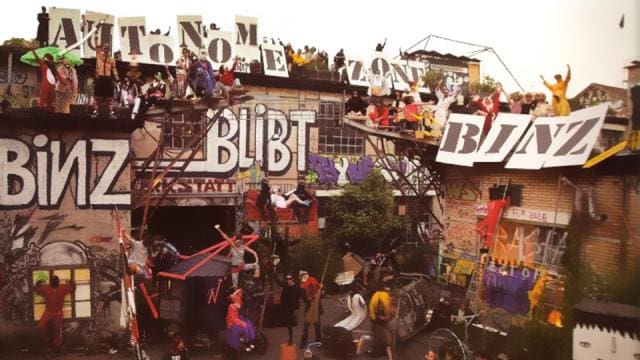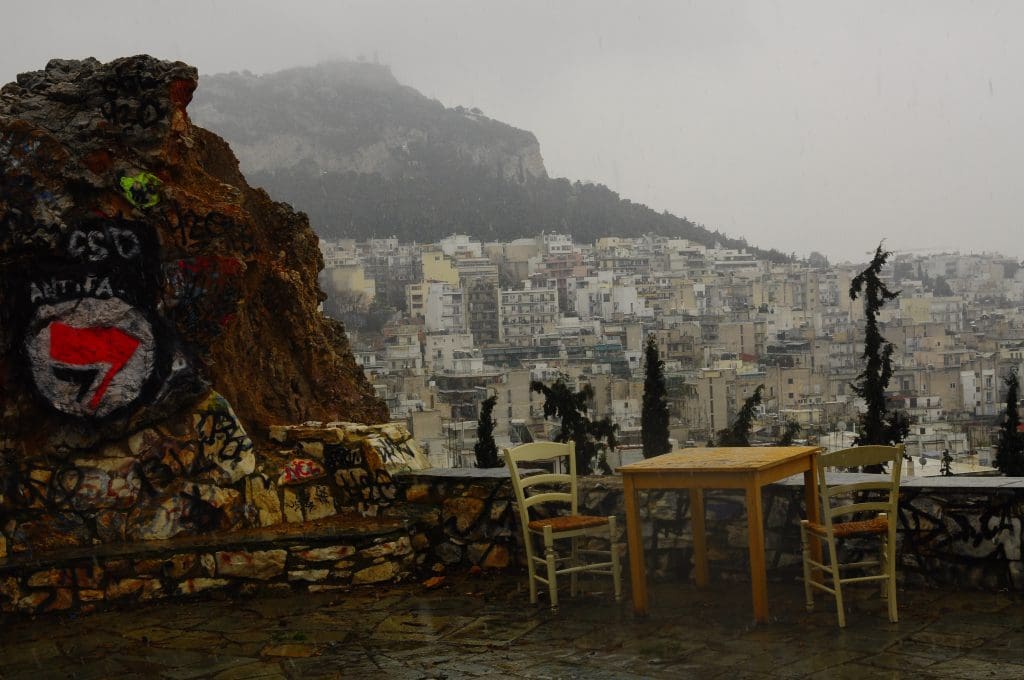By Antidote’s Ed Sutton
We can all stop wringing our hands about “the next Occupy.” Whatever our reasons for doing so—worrying that it might sweep the globe with irresistible force, or worrying that it won’t—we can rest assured that it is coming, just in a form we haven’t imagined yet.
We must remind ourselves that the global phenomenon we called “Occupy” was the (far from spontaneous) coalescence of various currents and codes based in self-organization that had already been around for decades—and are still around. This anarchistic ethos burst into the broader public consciousness in a new way, and though it was beaten back underground by astonishing state repression on a global scale, it will emerge again.
And if this coalescence called “Occupy” was in part a product of advances in communications, a brief moment when people were a step ahead of authorities—organizing using technologies not yet fully understood, monitored, or otherwise compromised by state power—the next global coalescence will be too. The democratization of communication technology continues to barge forward, and movements continue to develop in parallel.
Where are these movements, then, these communities and networks of self-organized resistance in opposition to the stronger-than-ever forces of militarized global neoliberalism and corporate fascism?
Right before our eyes, frankly. I can only speak to what I know: for example, in my hometown of Minneapolis, which I have been following with interest from afar, Occupy Homes has been active and successful in the ongoing struggle against evictions, sometimes using the tactic which their name describes and which has been practiced in Europe for decades: squatting.
Living in Switzerland, my activities with Occupy Zurich brought me in contact with the local squatter scene here. Note: the affinity between these movements is well expressed by the fact that the same German word is used for “occupy” and “squat:” besetzen. And it is worth briefly exploring these so-called “self-organized spaces,” since my impression is that squatting is a phenomenon taken largely for granted in Europe, but relatively unknown in the United States.
Seen as a threat, and threatened with extinction
Autonomous communities and the buildings they occupy are a particularly pressing topic in Europe at the moment. As austerity sweeps the continent, squats—among the last remaining scraps of common space (Freiraum) and therefore burrs in the saddle of neoliberalism’s charging horse, privatization—are being systematically cleared out.
In Greece, the wave of squat evictions has been largely driven by the need to eliminate real centers of active opposition that threaten the status quo (see my portrait of Athens’ antagonist movements).
In Switzerland, however, the threat to the status quo by the existence and activities of autonomous communities is not as deeply felt; anarchists are seen as an amusing if sometimes annoying minority worth scant attention in the political sphere. But the moves to eliminate these communities here are equally hysterical and harsh.
Even self-organized spaces that have a widely recognized and appreciated function in city life—like the Autonomous School of Zurich (ASZ), which provides language courses and legal advocacy help for severely under-served migrant communities—are being threatened by encroaching “development” and often face disproportionate police violence when they resist eviction or attempt to squat new spaces.
Where there was a mysterious fire last month at Villa Rosenau, a squat beloved enough in Basel that supportive editorials even appeared in the right-leaning Basler Zeitung, the building was simply demolished by police with no warning or explanation.
And last weekend, residents and supporters of Binz, Zurich’s longest-established squat (and the one more or less carrying the torch of the Freiraum movements from the late ‘60s and early ‘80s through today), were met with tear gas, rubber bullets and water cannons when a party turned into a march towards the city center to protest their imminent eviction.
This all reminds me very much of what I saw in Greece this past winter. Perhaps as a result of examples in Athens, there is a growing awareness and fear among Swiss authorities about what autonomous communities can become, should conditions be allowed to change. There seems to be a compulsion to “nip it in the bud,” to crack down early while these groups are still small, disorganized and vulnerable.
Strength in numbers: Building networks, changing the narrative
But these groups are in fact not small, disorganized, or vulnerable. That is, as long as they continue to explore new technologies and methods of communication, to network within countries and across borders in ways that were impossible only a short time ago. There has been a recent proliferation of facebook pages, blogs and hacktivist communities promoting solidarity and active cooperation among squats and autonomous zones all across Europe.
When the Villa Amalias squat in Athens was raided in late December of 2012, and completely shut down a month later, there were solidarity actions from Barcelona to London to Copenhagen, with squats throughout Germany and the former Yugoslavia showing particularly broad-based support. The ripples even reached Chicago.
And among the nearly 4,000 Binz supporters whom the police attacked last Saturday—turning Zurich’s city center into a soggy, stinking swamp of tear gas and trash fires—were not only former residents of Villa Rosenau in Basel, but a noticeably large number of German Autonomen. Solidarity was declared online, with astonishing speed, from Athens to Berlin.
This latter seems perhaps insignificant—a blog post or a lively discussion on facebook isn’t the same as a united continental front organized in credible opposition to the neoliberal power structure. But it isn’t terribly unrealistic to say it is a step in that direction, and one that was unimaginable in the “old media” context.
Speaking of “old media,” the few major newspapers that carried stories about last weekend’s three-hour, city-disabling street battle in the heart of Zurich (which one would think deserves a bit of in-depth reporting) focused solely on the extent of damage caused by vandals and avoided any reference to the political underpinnings of the event—underpinnings which would have shown the interconnectedness of similar actions and reactions occurring all over Europe.
This is the same media narrative that has been changing the subject and discrediting anti-capitalist movements for nearly two decades. Reporting on the 1999 Battle in Seattle comes to mind; it goes nearly without saying that similar propagandist tactics were also employed in coverage of Occupy. And even the best attempts by proponents of these movements to reframe the conversation—Rebecca Solnit’s writing is a great example—have until recently been largely ineffective.
“10,000 Squats Against Their World of Depression!”
The point is, this is changing. The newspapers and networks will keep telling the same story. But with the explosion of online social networking and New Media, television and newspaper versions of events are becoming less and less relevant to the discourse actually occurring among people.
The communication, coordination and solidarity becoming evident among previously insular squatter communities is a very promising sign. The next step will be to begin directing this communication from the movement outward—that it might become perceived as a movement, and therefore a movement that people can join.
Stories are surfacing about pensioners in Germany squatting a senior center under threat of closure due to lack of funds; of Spanish indignados breaking into sealed, vacant apartment buildings not to squat themselves but to provide living space for recent evictees of all stripes; of Minnesotans fighting the banks and refusing to leave their homes; even of anarchist movements being forged in the current tumults of the Middle East.
The time appears ripe to begin introducing squatter philosophies such as self-organization and the struggle for Freiraum and community preservation into the broader public discourse.
So I will start now with an appeal, from Europe to the United States, to radicalize. It is often remarked how many houses stand vacant in America—enough to outnumber homeless families. What to do with all these homes? Move into them.
Move in, and use every New Media channel available—from social networking sites to blogs to podcasting to the still-emerging Commotion software—first to organize and to learn about the practicalities of squatting, then to make sure everybody knows why you’re occupying the homes.
You can expect solidarity and support from Europe.
This article first appeared on 15 March 2013 on Occupy.com





